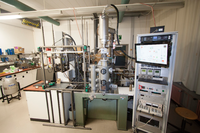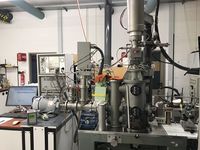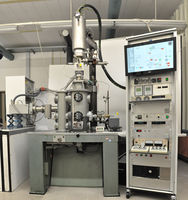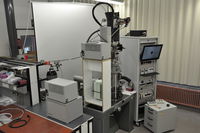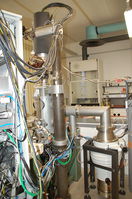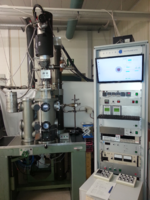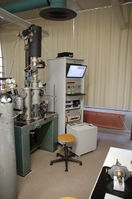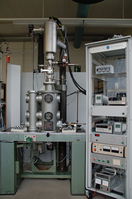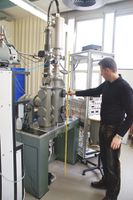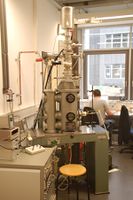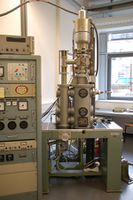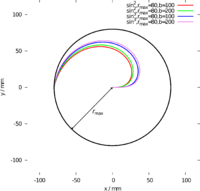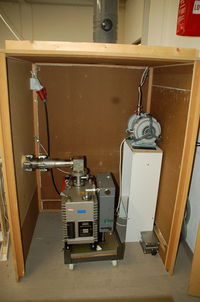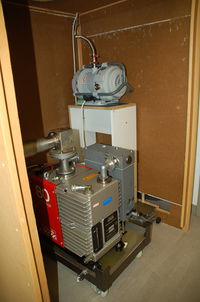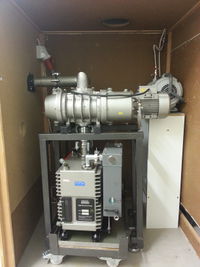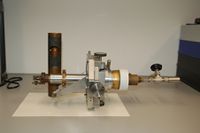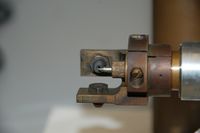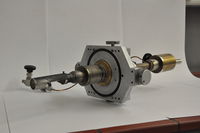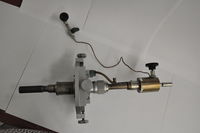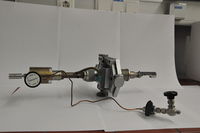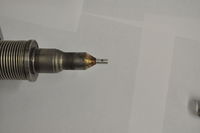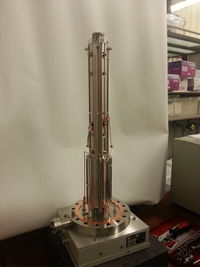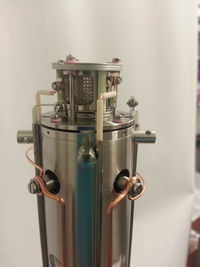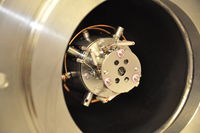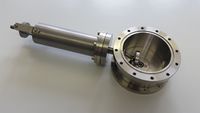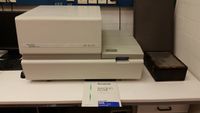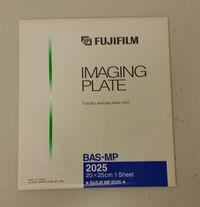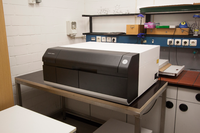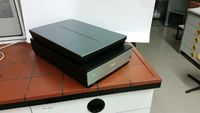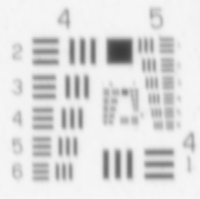BielefeldGED:Equipment
This page contains description of equipment used by GED group in Bielefeld.
News
| Date | Record |
|---|---|
| May 2019 | Frame for the MS unit is ready. |
| February 2019 | Improving the new IP reader for high-resolution scanning. |
| Oct 2018 | MS unit combined with cold trap and installed for use with conventional nozzle. First experiments with synchronous measurements of diffraction patterns and mass-spectra of sample molecular beams. |
| Mar 2018 | New cold trap for experiments with MS unit. |
| 2015 — 2018 | Minor improvements. |
| 13 May 2015 | A valve for separation of the diffraction and mass-spectrometer chambers has been built. |
| 22 May 2014 | Hiden PIC 1000 series mass-spectrometer has been installed. |
| 28 Feb 2014 | A new booster pump (Edwards EH500) has been installed. |
| 20 Dec 2013 | A new diffusion pump (Edwards Diffstak 250/2000P) has been installed. |
Diffractometer
The reconstructed Balzers Eldigraph KD-G2 (one of only two still existing ones worldwide) is presently in use in the laboratory. The most recent papers <bib id="BergerZFN2009" /> and <bib id="ReuterZNB2016" /> contain lots of details about this improved gas electron diffractometer.
Current state
History
Sector
In the apparatus at Uni-Bielefeld a sin2-type sector (15 cm in diameter) is used with common formula A*sin2(r/B). The formula shows opening angle of the sector depending on its radius r. Constants A and B are adjusted for corresponding requirements. When the constant B is defined the constant A can be calculated as π/sinn(rmax/B) (n is 2 or 3 for sin2 and sin3 types of sector, respectively), where rmax is the maximal possible radius of the sector.
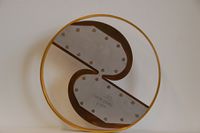
|
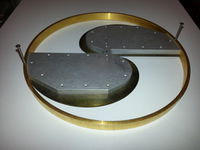
|
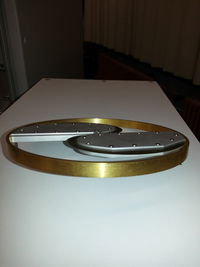
|
Pumps
Backing Pumps
Backing (fore-vacuum) pumps: Edwards x05 Scrollpump Oilfree, Edwards E2M80 oil pump and Edwards EH500 booster pump. Our last oilfree pump worked 48822.8 hours. On the pictures is the new one.
Diffusion Pumps
New diffusion pump (Edwards Diffstak 250/2000P), installed in December, 2013:
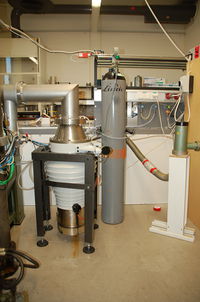
|
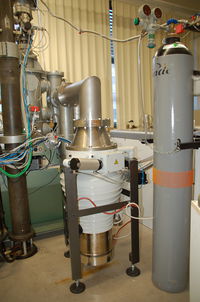
|
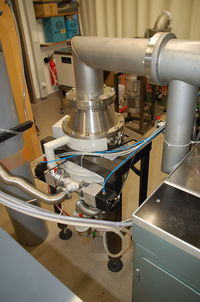
|
Old diffusion pump:
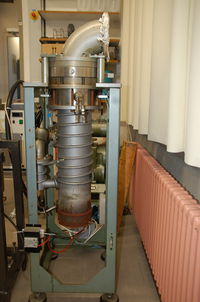
|
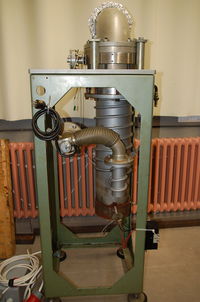
|
Turbo Pumps
Turbo pump (Edwards EXT70H) attached to the electron gun:
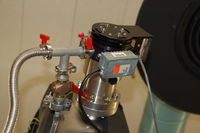
|
Inlet Systems
Room-temperature Nozzle
Medium-temperature Nozzle
This nozzle has been constructed for evaporation of compounds in a temperature range from 25 to 380 °C. However, it has also been successfully used for low temperatures below -15 °C.
Cold Trap
Cold trap designed for using liquid nitrogen and installed from the opposite to the inlet system side.
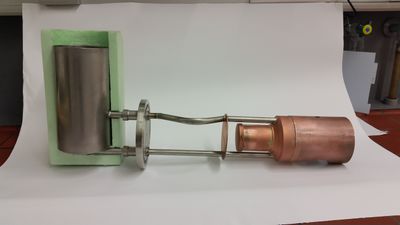
|
Below is a similar cold trap for using with mass-spectrometer unit. It is constructed so that molecular beam passes from diffraction volume to MS detector, attached from left side.
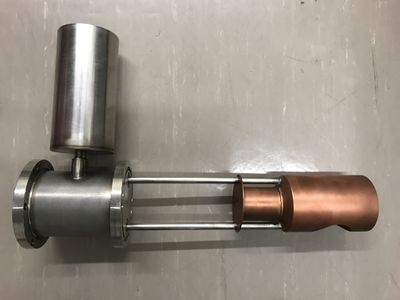
|
In-line mass-spectrometer
A Hiden mass-spectrometer (PIC 1000 series, up to 2500 amu) with EPIC ion counting detector is attached to the electron diffraction unit.
Detection system
Imaging Plates (IP) are used for recording diffraction patterns. IPs are scanned with a Fuji BAS-1800II scanner and the signal is deleted using an eraser.
Starting from 2019 we also use a newest IP reader Amersham Typhoon, which allows spatial resolution up to 10 μm.
For photo plates/films an EPSON Perfection V850 Pro is used. Its maximal optical resolution declared to be 6400 dpi. Our tests using a USAF-1951 target (see the image below) show that the real maximal resolution is 2048 dpi in the direction of moving lamp and CCD detector, and 2580 dpi for the CCD matrix. This also corresponds to the results of independent testing of an EPSON Perfection V800 scanner, which has essentially the same hardware as V850 Pro. Warning: films should not be scanned directly on the glass surface, otherwise they are not in focus and the resulting images are distorted!
References
<biblist />
